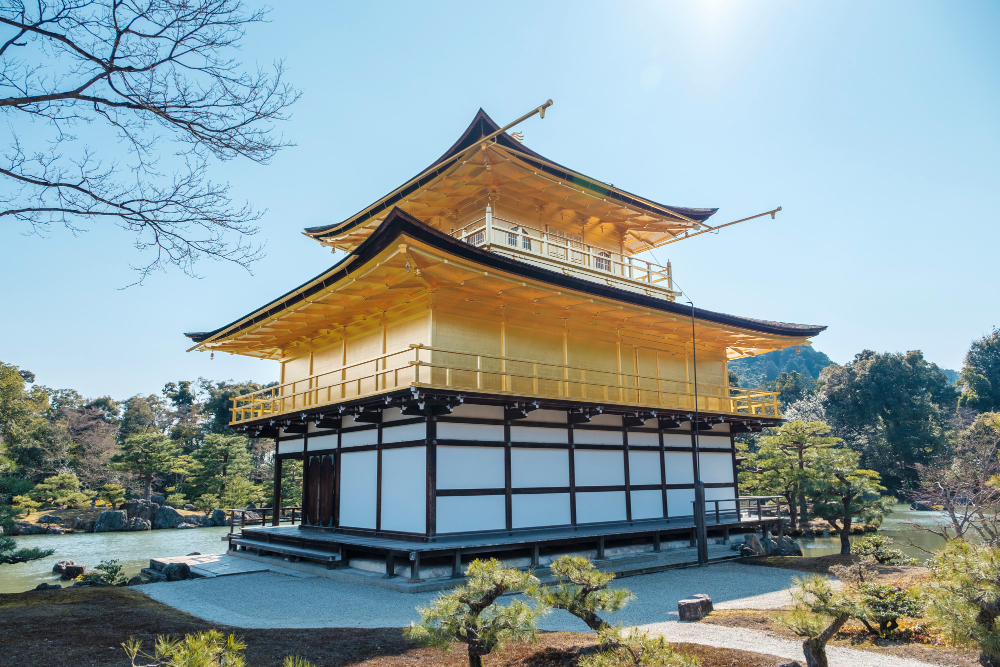Japanese architecture is a captivating fusion of ancient traditions and modern ingenuity, reflecting the country’s rich cultural heritage and forward-thinking approach. In this exploration, we delve into the elegance of Japanese architecture, uncovering its unique characteristics, historical influences, and the enduring beauty of its design.
Traditional Architecture: Honoring the Past
Traditional Japanese architecture is deeply rooted in the country’s history, influenced by Shinto and Buddhist beliefs. From Shinto shrines, with their striking torii gates and serene gardens, to Buddhist temples, with intricate wooden structures and Zen gardens, Japan’s traditional architecture exemplifies a harmonious blend of nature and spirituality.
The Art of Woodworking: Merging Aesthetics and Functionality
Wood plays a central role in Japanese architecture, and skilled craftsmanship in woodworking is celebrated. The use of natural materials like cedar, cypress, and hinoki not only adds to the aesthetic appeal but also enhances the building’s resilience against earthquakes and adverse weather conditions.
Zen Architecture: Embracing Simplicity and Serenity
Zen Buddhism has greatly influenced Japanese architecture, emphasizing simplicity, minimalism, and an appreciation for the natural environment. Zen temples and tea houses exemplify the concept of wabi-sabi, valuing imperfection and the transient nature of existence.
Traditional Gardens: Masterpieces of Landscape Design
Japanese gardens, both within temple grounds and private residences, are works of art that reflect the harmony between human and nature. Elements like stone pathways, water features, and carefully pruned trees create serene and contemplative spaces.
Shogunate and Castles: Power and Defense
The feudal era brought the construction of majestic castles and fortresses across Japan. These architectural marvels served both as symbols of power and as strategic defense points. Himeji Castle, known as the White Heron Castle, stands as an iconic example of this era’s architecture.
Modern Architecture: Pioneering Innovation
With the advent of modernization, Japan embraced cutting-edge architecture that combines functionality and innovative design. Skyscrapers, such as Tokyo’s iconic Tokyo Skytree and the Mode Gakuen Cocoon Tower, showcase Japan’s prowess in modern construction and engineering.
Futuristic Cities: Urban Landscapes of Tomorrow
Japan’s cities are architectural wonders in themselves, with Tokyo being a prime example of a futuristic metropolis. The blend of contemporary skyscrapers, neon-lit streets, and high-speed railways showcases Japan’s progress while maintaining a strong cultural identity.
Sustainable Design: Embracing Environmental Responsibility
As environmental awareness grows, Japanese architecture embraces sustainable design principles. Concepts like eco-friendly materials, energy-efficient buildings, and green rooftops are increasingly integrated into urban projects.
The Influence of Nature: Harmony with the Surroundings
Japanese architecture emphasizes harmony with the natural surroundings, often incorporating elements like courtyards, water features, and large windows to connect interior spaces with the outdoors. This design approach creates a seamless transition between man-made structures and nature.
The Enduring Allure: Preserving a Cultural Legacy
As Japan moves forward in the 21st century, its architectural heritage remains deeply respected and preserved. Historical buildings and traditional craftsmanship are protected, ensuring that the nation’s cultural legacy continues to thrive.
An Aesthetic Symphony
Japanese architecture is a captivating symphony that weaves together tradition, innovation, and reverence for nature. From ancient temples to modern skyscrapers, each structure tells a unique story, reflecting Japan’s cultural values and vision for the future. The elegant beauty of Japanese architecture continues to inspire awe and admiration, inviting travelers and enthusiasts to immerse themselves in a timeless and ever-evolving world of design excellence. As Japan embraces the future while honoring its past, its architectural marvels stand as a testament to the country’s enduring commitment to artistry, harmony, and the pursuit of perfection.
